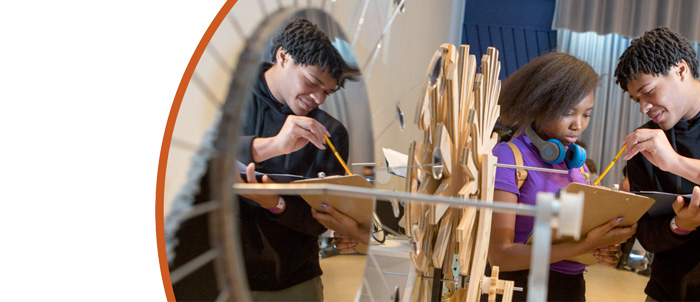Design for Sustainability: How Mental Models of Social-Ecological Systems Shape Engineering Design Decisions
Effective Years: 2023-2027
The work engineers do and the designs they create have long-term, often unforeseen, impacts on people, infrastructure, and the environment. To help ensure that the results of engineering work advance human and environmental well-being, we need to first understand how engineers currently connect their technical work to these broader contexts and systems. To achieve this understanding, this project will integrate cognitive and behavioral science, social theory, and advanced computational methods to connect theories of mental models and planned behavior with engineering design practice. In particular, the project will examine the beliefs and practices of students in civil and chemical engineering programs across the country, two fields that have substantial impacts on the Nation’s infrastructure and environment. The results will enable future researchers and educators to predict how students’ mental models of social and ecological systems will inform their engineering design work. Such predictions in turn will assist educators to more effectively develop students’ ability to account for the broader impacts of their work. In doing so, this project will also help educators better understand how students transfer their learning about design as undergraduates into the practice of design in the workplace. This transition is not yet well-understood but is critically important in shaping engineers’ real-world decisions in light of long-term impacts on society and the environment. This focus on the links between formal education and professional practice will help to identify places in undergraduate courses and programs where educators can assist students to better recognize and understand the impacts of their work and use that understanding to make decisions more likely to lead to positive future impacts. Finally, the project uses advanced analytic approaches such as natural language processing and Bayesian statistics to increase the capacity of educational research in dealing with large-scale qualitative data sets and novel information formats.
The project integrates the theory of planned behavior with mental models to build new fundamental knowledge about (1) engineers’ mental models of social-ecological systems (SES), (2) changes in students’ mental models over time, and (3) relationships between mental models and design decisions in both engineering school and engineering work. By leveraging and extending recent advances in natural language processing and Bayesian statistics, the project will test and validate a powerful approach to qualitative data analysis that allows for much larger sample sizes but is currently underused in the field. Senior engineering students in chemical (n=250) and civil (n=250) in capstone courses from a range of universities across the country will be recruited and followed into post-graduation employment. These disciplines are chosen both because of their potential impact on national infrastructure and environments and because prior work has identified potential differences in mental models among these engineering subdisciplines that highlight the need for comparative research. The capstone to work period is the central focus in the study because capstone provides an ideal environment to examine the relationships between mental models of SES and design decisions, but those relationships may change as graduates encounter competing interests, industry norms, and increased complexity in engineering practice. A combination of quantitative and qualitative data will be collected at multiple time points to measure participants’ mental models of SES as well as their design decisions. Identifying and understanding how mental models of these systems inform design decisions as participants transition from formal education into the workforce can inform engineering workforce development and better prepare engineers to design for sustainability and meet emerging sociotechnical and environmental challenges.
This project is supported by NSF’s EDU Core Research (ECR) program. The ECR program emphasizes fundamental STEM education research that generates foundational knowledge in the field. Investments are made in critical areas that are essential, broad and enduring: STEM learning and STEM learning environments, broadening participation in STEM, and STEM workforce development.
This award reflects NSF's statutory mission and has been deemed worthy of support through evaluation using the Foundation's intellectual merit and broader impacts review criteria.




